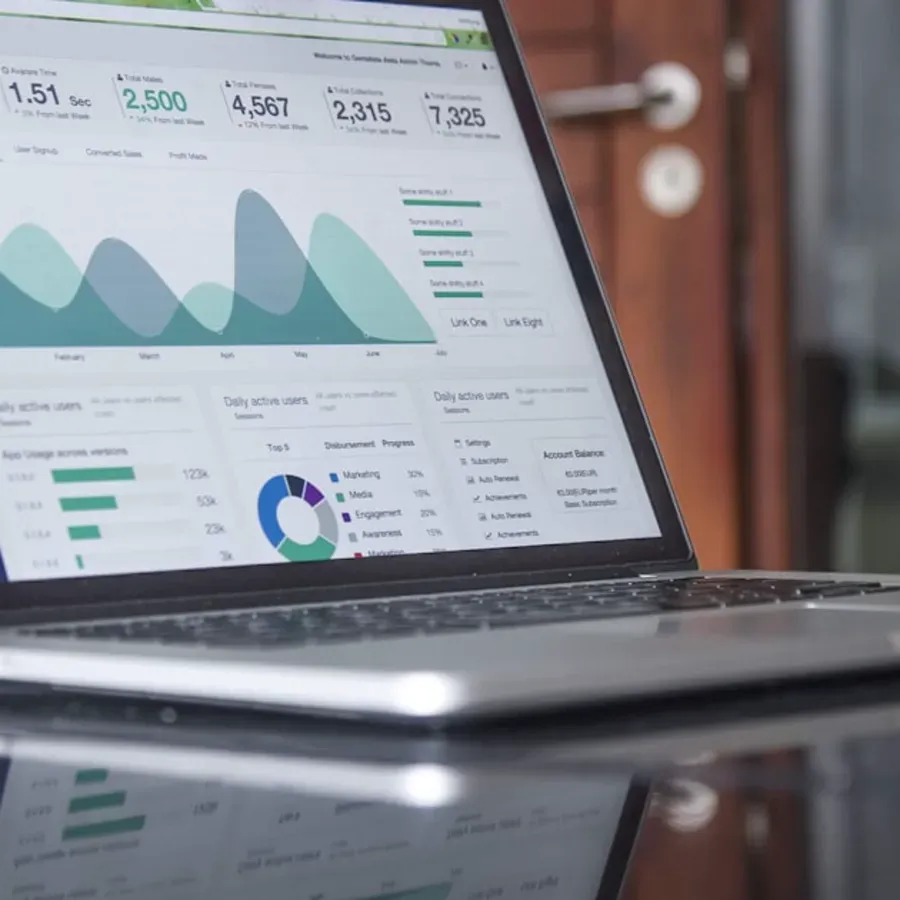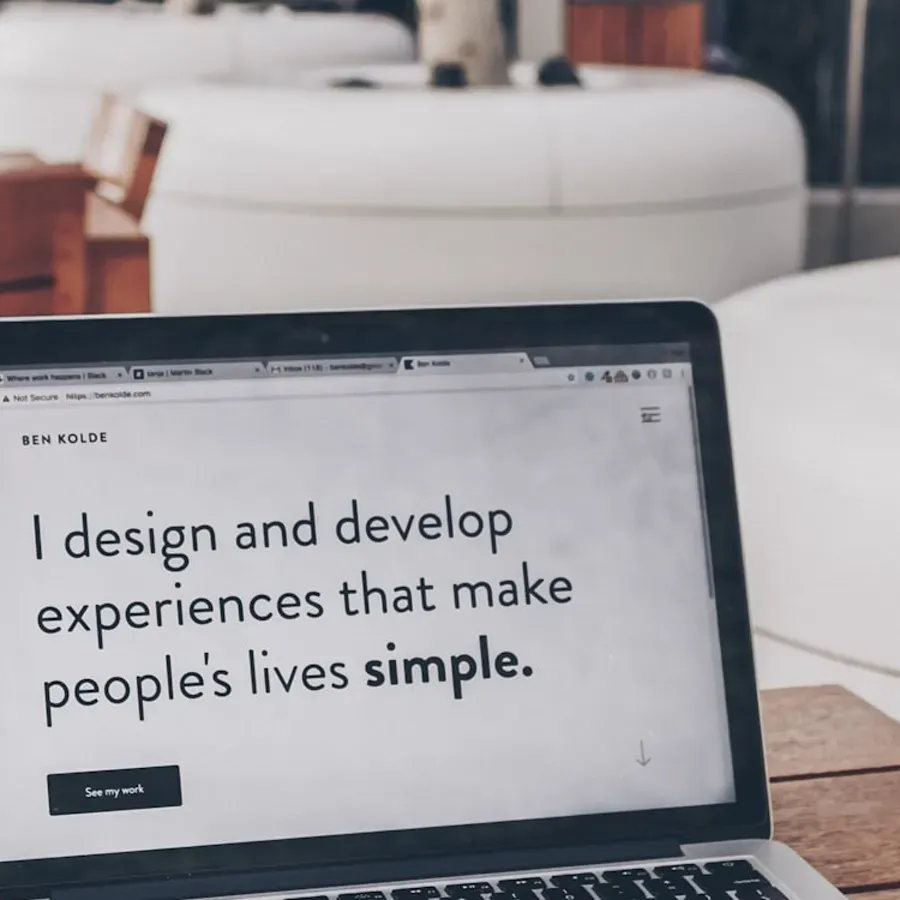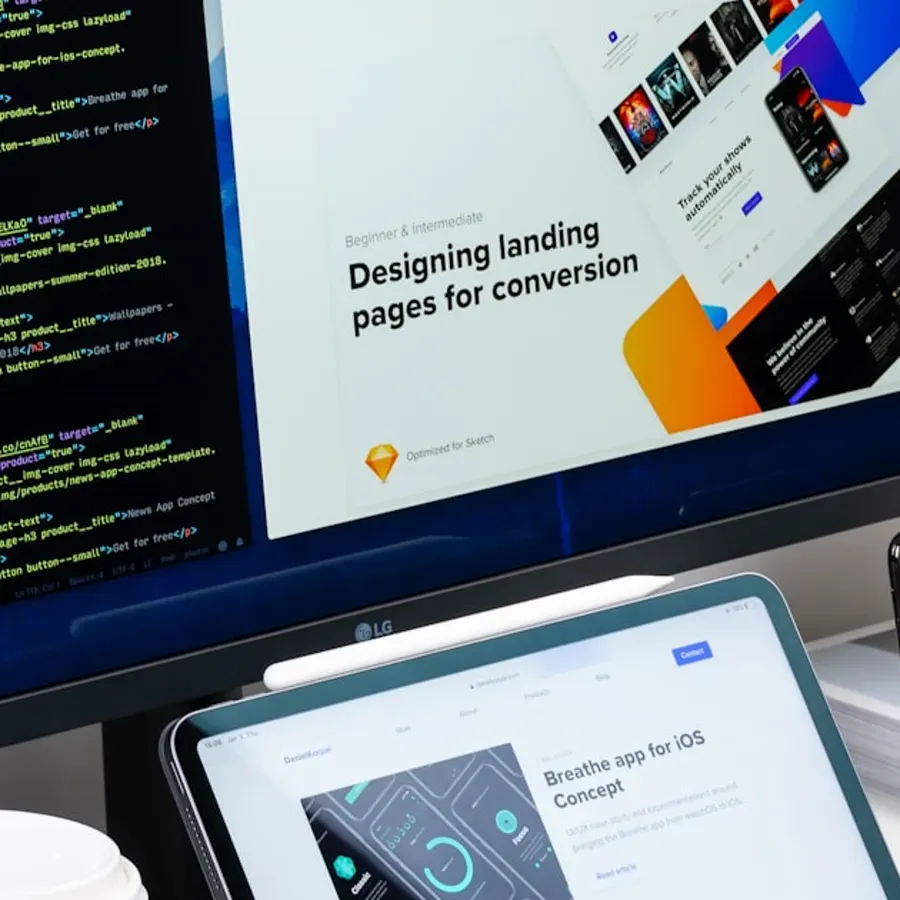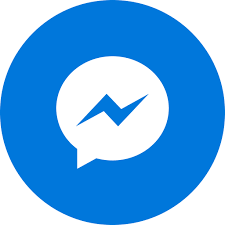
Why Landing Pages Outperform Regular Website Pages
When it comes to digital marketing campaigns, the difference between a regular website page and a dedicated landing page design can mean the difference between squandering your advertising budget and achieving remarkable ROI. While your homepage serves multiple purposes and caters to various audience segments, a conversion-optimized landing page has a singular, laser-focused objective: turning visitors into customers, leads, or subscribers.
The statistics speak for themselves. Average landing page conversion rates hover between 2-5%, but high-performing landing pages consistently achieve conversion rates of 10% or higher. Some exceptional campaigns even reach 20-30% conversion rates. The secret? A strategic landing page design that eliminates distractions and guides visitors toward one specific action.
Unlike traditional website pages with multiple navigation options, links, and competing calls-to-action, landing pages maintain what conversion experts call an ideal "attention ratio" of 1:1. This means one goal, one message, and one clear path forward. Every element on the page exists to support that singular conversion objective, whether it's capturing email addresses, booking consultations, or driving product purchases.
Regular website pages typically have attention ratios of 20:1 or higher—twenty or more links, buttons, and navigation options competing for visitor attention. This fragmented focus dilutes your message and provides countless exit points. Landing pages eliminate these distractions, creating a focused conversion environment where visitors either take action or leave. This binary simplicity is precisely what makes landing page design so effective for campaign-specific marketing efforts.
Understanding the Psychology of Conversion
Effective landing page design isn't just about aesthetics—it's rooted in consumer psychology and behavioral science. Understanding how visitors think, what motivates them, and what creates hesitation is fundamental to creating conversion-optimized landing pages that actually work.
The decision-making process happens in stages. Visitors arrive with varying levels of awareness about their problem and your solution. Some are problem-aware but solution-unaware. Others know exactly what they want and are comparing options. Your landing page design must acknowledge these different mindsets and guide visitors through a logical progression from curiosity to conviction to action.
Cognitive load theory teaches us that humans have limited mental processing capacity. When faced with too many choices or complex information, we experience decision paralysis. This is why conversion-optimized landing pages strip away everything non-essential. Every headline, image, and piece of copy should reduce cognitive load rather than increase it, making the path to conversion feel effortless and obvious.
Trust is another critical psychological factor. Visitors naturally approach new websites with skepticism, especially when asked to provide personal information or make purchases. Your landing page design must overcome this skepticism through strategic trust-building elements: social proof, security badges, clear privacy policies, and risk-reversal mechanisms like money-back guarantees or free trials. These elements work subconsciously to lower psychological barriers to conversion.
Crafting Compelling Headlines and Value Propositions
Your headline is the most critical element of your landing page design. Studies show that 80% of visitors will read your headline, but only 20% will read the rest of your content. This means your headline must immediately communicate value and relevance, or you've lost the majority of your traffic within seconds.
Effective headlines for conversion-optimized landing pages follow proven formulas. They identify the visitor's problem, promise a specific benefit, and create curiosity or urgency. Generic headlines like "Welcome to Our Service" waste precious attention. Instead, use benefit-driven headlines like "Generate 300% More Qualified Leads in 90 Days" or "Finally, A Landing Page That Converts Visitors Into Paying Customers."
Your subheadline works in tandem with your main headline, providing additional context and reinforcing the value proposition. While the headline grabs attention, the subheadline builds on that interest and bridges to your body copy. Together, they should answer the visitor's immediate question: "What's in it for me?"
The value proposition extends beyond just the headline. It permeates every section of your landing page design, consistently reinforcing why your offer is unique, valuable, and worth taking action on right now. Focus on benefits rather than features. Don't say "24/7 customer support"—say "Get answers whenever you need them, day or night." Transform features into tangible outcomes that visitors can envision in their own lives or businesses.
Visual Hierarchy and Design Flow
How visitors visually consume your landing page design directly impacts conversion rates. Eye-tracking studies have identified predictable patterns in how people scan web pages, with the F-pattern and Z-pattern being the most common reading flows.
The F-pattern describes how visitors read content-heavy pages. They start at the top left, scan horizontally across, drop down, scan a shorter horizontal line, then scan vertically down the left side. Understanding this pattern allows you to position your most important elements—headlines, key benefits, and calls-to-action—along these high-attention zones.
The Z-pattern applies to pages with less text and more visual elements. Visitors' eyes trace a Z-shape: top left to top right, diagonally down to bottom left, then across to bottom right. This pattern is ideal for hero sections with headline, supporting image, and prominent call-to-action button positioned strategically along this Z-path.
Visual hierarchy uses size, color, contrast, and spacing to guide visitors through your content in a deliberate sequence. Your most important elements should be largest and most visually prominent. Strategic use of whitespace prevents visual overwhelm and draws attention to key conversion elements. A conversion-optimized landing page design never feels cluttered or chaotic—it feels spacious, organized, and easy to navigate visually.
Directional cues subtly guide visitor attention toward your call-to-action. Arrows pointing to your CTA button, images of people looking toward your form, or design elements that create visual momentum all work subconsciously to direct the eye where you want it to go. These psychological triggers increase the likelihood that visitors will notice and engage with your conversion elements.
Call-to-Action Optimization
Your call-to-action (CTA) is the culmination of your entire landing page design. After all the persuasion, trust-building, and value communication, this is where visitors either convert or abandon. CTA optimization can literally double or triple your conversion rates.
Color psychology plays a significant role in CTA effectiveness. While there's no universally "best" CTA color, high-contrast colors that stand out from your page's color scheme consistently outperform. Red, orange, and green buttons often perform well because they contrast with typical blue-and-white designs. The key is ensuring your CTA button is immediately visible and visually distinct from everything else on the page.
Button copy matters enormously. Generic phrases like "Submit" or "Click Here" underperform compared to benefit-oriented copy like "Get My Free Guide," "Start My Trial," or "Show Me How." The best CTA copy is specific, action-oriented, and reinforces the value visitors will receive. First-person language ("Get My" rather than "Get Your") often increases conversions by making the action feel more personal and immediate.
Strategic CTA placement means including multiple CTAs without overwhelming visitors. Your primary CTA should appear above the fold, visible without scrolling. For longer landing pages, repeat CTAs every 2-3 scroll sections, after you've built additional value and overcome objections. Your final CTA at the page bottom should be your strongest, as visitors who've read everything are your most qualified prospects.
Button Size and Design Elements
Your CTA button must be large enough to be immediately noticeable but not so large it appears aggressive or desperate. Mobile-friendly buttons need at least 44x44 pixels of tappable area. Use subtle design elements like shadows, gradients, or animation to make buttons feel interactive and clickable. Adding urgency phrases near your CTA—"Limited spots available" or "Offer ends soon"—can increase conversions when used authentically.
Form Design and Lead Capture
For lead generation landing pages, your form is the critical conversion point. Form design optimization follows one golden rule: the fewer fields you require, the higher your conversion rate. Every additional form field decreases completions by approximately 10-20%. A conversion-optimized landing page balances the need for lead information with the reality that friction kills conversions.
Only ask for information you absolutely need at this stage. A name and email address is often sufficient for initial lead capture. You can collect additional information later through progressive profiling or follow-up communications. Phone numbers, company names, and detailed questionnaires significantly reduce form completions unless your offer provides exceptionally high value.
Form field design matters too. Use inline validation to show visitors in real-time whether their entries are correct, reducing frustration and abandonment. Clear labels and smart defaults make completion easier. For international audiences, especially in Vietnamese markets, consider which fields are culturally relevant—asking for company size might be standard in Western contexts but feel intrusive in some Asian markets.
Multi-step forms can increase conversions for longer forms by reducing perceived complexity. Breaking a 10-field form into three steps (3 fields, 4 fields, 3 fields) with a progress indicator makes completion feel more achievable. Visitors who complete step one are psychologically committed and more likely to finish the entire process.
Social Proof and Trust Signals
Nothing convinces visitors to convert faster than seeing that others have already done so successfully. Social proof is the psychological phenomenon where people look to others' actions to determine correct behavior. Your landing page design should strategically incorporate multiple forms of social proof to overcome skepticism and build trust.
Customer testimonials are the most common and effective form of social proof. Effective testimonials are specific, credible, and relevant to your target audience. Avoid generic praise like "Great service!" Instead, showcase testimonials that mention specific results: "Increased our conversion rate by 340% in just six weeks." Include photos, full names, and company names to enhance authenticity.
Client logos demonstrate that recognizable brands trust you. If you've worked with well-known companies, displaying their logos prominently provides instant credibility. For Vietnamese market landing pages, including logos of Vietnamese companies your target audience would recognize is particularly powerful—local social proof resonates more strongly than international brands many visitors may not know.
Numbers provide powerful social proof: "Join 50,000+ satisfied customers," "Trusted by 500+ businesses," or "4.9/5 stars from 2,000+ reviews." Quantifying your success and customer base creates momentum—if thousands of others have chosen you, it must be the right decision.
Trust badges and security seals address specific concerns about safety and privacy. SSL certificates, payment security badges, industry certifications, and awards all contribute to perceived trustworthiness. For conversion-optimized landing pages handling transactions or sensitive information, these signals are essential for reducing abandonment at the crucial moment of conversion.
Mobile Landing Page Best Practices
With mobile devices accounting for over 60% of web traffic, mobile-optimized landing page design is no longer optional—it's fundamental. A landing page that converts beautifully on desktop but fails on mobile is leaving money on the table.
Mobile landing pages require ruthless simplification. Screen real estate is limited, so every element must justify its presence. Headlines should be shorter and punchier for small screens. Paragraphs should be broken into smaller chunks. Images must be optimized for mobile viewing, loading quickly without sacrificing quality.
Touch-friendly design is critical. Buttons and clickable elements need adequate size and spacing to prevent frustrating mis-taps. Forms should use appropriate input types (number pads for phone fields, email keyboards for email addresses) to streamline completion. Auto-fill capabilities should be enabled to reduce typing on small keyboards.
Page speed matters even more on mobile, where connection speeds may be slower and users are more impatient. A conversion-optimized landing page must load in under three seconds on mobile. Every additional second of load time decreases conversions by approximately 7%. Compress images, minimize code, leverage browser caching, and use content delivery networks to ensure lightning-fast mobile performance.
Vertical scrolling comes naturally on mobile, so longer-form landing pages work well—but front-load value. Your headline, primary benefit, and CTA must appear immediately without scrolling. Vietnamese mobile users, in particular, are comfortable with long-form content on mobile devices if it's well-structured with clear headings and visual breaks.
A/B Testing and Continuous Optimization
The most successful landing page design strategies embrace continuous testing and optimization. No matter how experienced the designer or copywriter, you cannot predict with certainty what will resonate most strongly with your specific audience. Data-driven testing removes guesswork and consistently improves conversion rates over time.
A/B testing (split testing) involves creating two versions of your landing page with one variable changed—headline, CTA color, form length, image choice—and directing traffic equally to both versions. Statistical analysis reveals which version converts better, and that winner becomes your new control for the next test.
Start testing the elements with the highest potential impact: headlines, CTAs, and form length. These typically produce the most significant conversion improvements. Later, test more nuanced elements like testimonial placement, image selection, or color schemes. Test one variable at a time to clearly identify what's driving performance changes.
Beyond A/B tests, analyze user behavior through heatmaps, scroll maps, and session recordings. These tools reveal where visitors click, how far they scroll, and where they abandon. This qualitative data provides insights that pure conversion numbers cannot, helping you identify friction points and optimization opportunities you might never have considered.
Set clear success metrics before launching tests. Understand statistical significance—running a test for just 100 visitors won't produce reliable results. Most tests need at least 1,000 visitors per variation and a minimum conversion count of 100 to achieve statistical significance. Patience in testing produces reliable insights that compound over time into dramatically improved performance.
Why Choose M&M Communications
Creating conversion-optimized landing pages requires the intersection of strategic thinking, psychological understanding, technical expertise, and creative execution. At M&M Communications, we've spent years perfecting the science and art of landing page design that converts.
Our approach goes beyond pretty designs. We start with deep audience research to understand exactly what motivates your target customers, what objections they have, and what messaging will resonate most powerfully. We apply proven conversion optimization principles while testing relentlessly to improve performance continuously.
For businesses targeting Vietnamese audiences, we bring cultural insights that generic international agencies lack. We understand the trust-building elements that Vietnamese consumers respond to, the payment methods and form fields that reduce friction, and the social proof that carries weight in Vietnamese digital environments. Our landing pages don't just translate content—they adapt strategically for maximum local market effectiveness.
We implement comprehensive tracking and analytics from day one, giving you complete visibility into landing page performance. You'll know exactly how many visitors convert, where traffic comes from, and which elements drive the best results. Our conversion pixel implementation ensures every marketing platform receives the data it needs for optimization.
Whether you're running Google Ads, Facebook campaigns, email marketing, or any other traffic source, your landing page is where ROI is won or lost. We design conversion-optimized landing pages that transform your marketing spend from an expense into a profit-generating investment.
Ready to stop wasting traffic on underperforming pages? Let's create landing pages that turn your visitors into customers. Contact M&M Communications today at 0909 123 456 or email us at hello@mmcom.vn. Our conversion optimization experts will analyze your current performance, identify opportunities, and develop a landing page strategy that delivers measurable results. Your next high-performing campaign starts with a landing page designed to convert.






